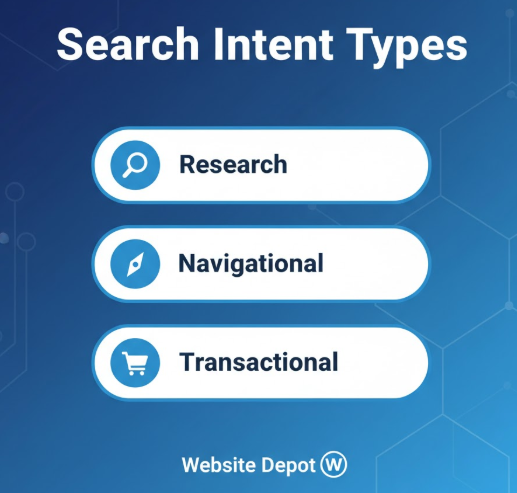
You wouldn’t use a hammer for a job that required a wrench. You wouldn’t build a log cabin out of Styrofoam. Using the right tool for the job, as you know, makes all the difference. The same goes for SEO home improvement content. High-value keywords are absolutely the right tool for the job.

When we talk about the best high-value keywords, we mean search terms that attract the kinds of users who are likely to become customers.
The process involves researching what people search for, aligning those searches with the services offered, and producing content that supports those queries.
High-value keywords are the right tool for the job. The job is to fit your services, reflect buyer intent, and help you grow in search results.
High-Value SEO Keywords: What They Are and Why They Matter
High-value keywords are search phrases that naturally connect your services to the needs of your audience. They are not just popular; they are relevant to what you actually do and what your ideal customer is actively searching for.
These keywords support service pages, blog posts, landing pages, and location-based content across your site.
This is true regardless of your home improvement niche. Whether you’re looking to do better in SEO for painters, contractors, landscapers, or anyone else, these are the fundamentals.
Home improvement companies often serve customers who are making a major decision. The language they type into Google reflects where they are in the decision process. That’s why choosing the right keyword targets can make the difference between more qualified leads and wasted traffic.
High-value home improvement keywords tend to:
- Describe a clear service
• Match what customers are searching for when they are ready to act
• Support visibility in local markets
• Show real buyer interest and intent
Examples of high-value terms could include:
- Home window replacement near me
• Kitchen remodel contractor quotes
• Best siding contractor in (city)
• Deck repair services cost
Each of these contains both a service and a customer action or location cue. They connect what you offer to what someone is actively seeking.
Of course, once you get them to your site, you want a site that makes them want to stay. The right web design in Los Angeles (or anywhere) can help take your readers through step two.

Search Intent: How to Align Keywords With What Users Want
Not all searches are the same. People use search engines differently depending on whether they are researching, comparing, or are ready to hire. When developing SEO home improvement strategies, we map these searches along the service funnel.
There are three primary types of search intent:
Informational / Research
These are early-stage searches from people who are exploring ideas or gathering knowledge.
Examples:
• How much does a bathroom remodel cost?
• Types of home siding materials
• Pros and cons of quartz countertops
These searches build awareness. Content for these queries should educate and offer value. They may not convert immediately, but they guide people deeper into the funnel.
Local / Navigational
These searches indicate a user who is now looking for businesses that can help them.
Examples:
• Remodeling contractor in (city)
• Roofing company near me
• Local deck-building services
These are highly relevant for service companies because they show geographic intent.
Commercial / Transactional
These are the highest-value searches because the user is ready to hire.
Examples:
• Best home remodeling contractor free estimate
• Hire kitchen designer in (city)
• Flooring installation quote
When we align keywords with search intent, we create better opportunities to connect with users at each stage of the decision-making process.
How Geo-Specific and Localized Keyword Targeting Helps Convert Leads
Home improvement work happens on-site. That makes local intent essential. Even if your services apply broadly, customers search within their own region.
Local keyword variations are especially useful:
- (City) home remodeling company
• (City) window installation service
• Licensed contractor in (region)
Local targeting allows you to:
- Compete where your audience lives
• Reduce wasted clicks from outside markets
• Improve visibility among nearby searchers
• Increase the chance of receiving inquiries that convert
Localization also applies to phrasing. Regions sometimes have different terminology. For example, one area may search “ADU builder,” while another searches “garage conversion contractor.” Paying attention to local language patterns can provide a direct advantage.
This is all the more important for home improvement companies because the industry is “local.” Since Google sees the industry as “local,” local SEO services are the ones that can provide the most ROI.

Long-Tail Optimization: How to Reach Customers Who Know What They Want
Long-tail keywords are longer, more specific variations of broad search terms. They often have lower competition and more targeted user intent.
Examples:
• Replace single-pane windows with energy-efficient vinyl windows
• How to repair wood rot on exterior siding
• Modern open kitchen remodel ideas with cost ranges
Long-tail searches are powerful because they:
- Connect with users who have a clear need
• Allow you to focus content on precise questions
• Help your site stand out even in competitive markets
We use long-tail optimization within SEO home improvement campaigns to build trust and authority while guiding customers toward your service pages.
How to Study Search Competitors to Find High-Value Keyword Opportunities
The home improvement field is competitive. If another company is outranking you, it means they have done something well that is worth examining. Studying search competitors shows where content gaps and market opportunities exist.
We look at:
- Who currently appears in the top search positions for your core services
• How those companies structure their service and city pages
• What kinds of topics their blog covers
• How frequently they publish updates
• The keywords they rank for that you have not targeted
We also evaluate customer-facing assets such as:
- Review platforms
• Local business profiles
• Social proof
• Frequently asked questions from clients
These insights help determine where you can outperform similar providers, whether you offer remodeling, roofing, flooring, siding, painting, or related services.
For example, if “SEO for painters” is competitive, analyzing the top-ranking sites helps refine what topics to target and how to format your service pages.
Customer Voice: What Your Audience Says Matters for SEO Home Improvement
Your customers show you what they search for through:
- Reviews
• Phone call transcripts
• Messages and inquiries
• Job requests
• Questions before hiring
These real-world conversations reveal the language your customers naturally use. This is essential when selecting keywords, naming service pages, and choosing blog topics.
Common themes in customer language often indicate:
- What matters most to them
• What confuses them
• What they need help deciding
• What problems they want solved
When we match our SEO home improvement strategy to the words your audience already uses, your content feels more relevant—and ranking becomes easier.
How to Put It All Together in Your SEO Home Improvement Content Strategy
Once we identify high-value keywords, intent alignment, localization, and competitive insights, we integrate these into your content:
- Service pages tailored to your primary offerings
• City or neighborhood pages focused on local markets
• Long-form resource and how-to content for early-stage researchers
• Landing pages that speak to transactional intent
• Blog posts that support ongoing search discovery
We ensure each page supports its role in the broader search funnel, guiding visitors from early interest to service inquiry.
How You Can Build a Foundation for Your Business
You don’t have to take our word for it. Actual studies have shown how important SEO is. Studies have found that “a brand could be considered old-fashioned if it does not utilize SEO as their marketing strategy.”
Of course, it’s not enough to just “utilize” SEO. You have to utilize it properly.
When handled correctly, SEO home improvement strategies connect the right visitor to the right part of your site at the right time.